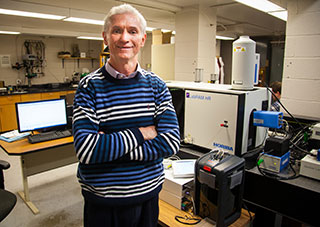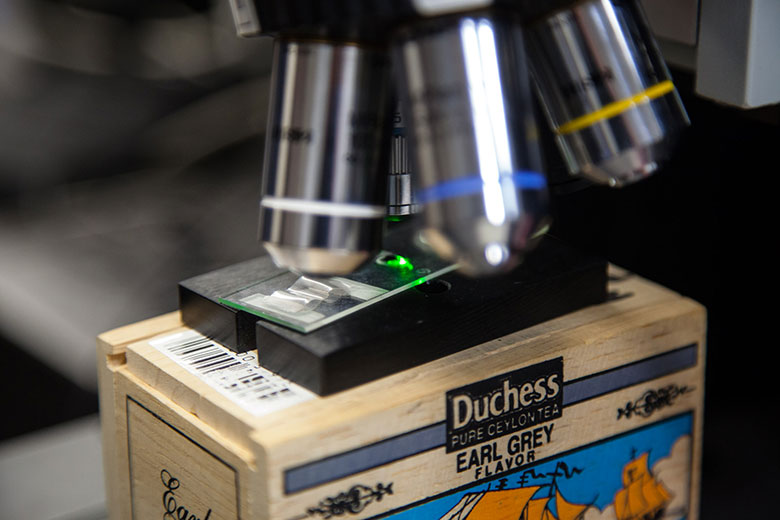Hydrogen drives the future of energy
“How do we harvest and store energy so that it’s done in a benign manner to the environment?” Mayanovic asked. “One of the things we’re aiming to do is to make energy conversion more efficient. One way to do that is to go with higher temperatures and pressures for the exchange and mediating fluids in energy-conversion reactors.”
Although hydrogen is the simplest element – only one proton and one electron – it occurs naturally only in minimal amount as a gas on Earth. It is only found in compounds with other elements, as in water combined with oxygen, or in many other fuels like gasoline, natural gas, methanol and propane. Obviously, burning fossil fuels like coal or extracting hydrogen from gasoline impacts the environment negatively, so Mayanovic is collaborating with other scientists within the EFree center, which is part of the Energy Frontier Research Center program, to find a more sustainable solution.

In physicist Dr. Robert Mayanovic’s laboratory, he and his students are researching materials to extract hydrogen more efficiently to make it a readily available energy source.
Small doesn’t begin to describe it
Since his days as a student, Mayanovic has been drawn to research of materials in extreme environments, like high pressure or in fluids at high temperature and pressure. He’s also focused his research on nanoscale materials, something so small that thousands could fit within a hair and is invisible using an ordinary optical microscope. Instead, to work with nanoscale materials, he uses a scanning electron microscope (SEM).
In his lab, they have been able to modify some of the nanoscale materials to make them more responsive in the visible range (opposed to the ultraviolet range) for applications involving splitting water to harvest hydogen. However, he isn’t satisfied with the efficiency of these materials as they are still impractical for widespread energy applications. Similarly, he noted electrolysis (the process by which you split water to make electricity) is an inefficient method because you spend more energy than what is extracted in the form of hydrogen.
“What you want to do is use the sun within a cell that is able to split water and make hydrogen sources that you can tap as you need,” said Mayanovic.

“We hope to cause a reaction to convert the biomass into hydrogen or methane, so you have a new energy source.” — Dr. Robert Mayanovic
Extreme laboratory
Behind the safety goggles, you also will see work being done in Mayanovic’s lab on materials with catalytic or reactive properties to induce biomass gasification.
“What you’re doing is taking your biomass, putting it in a reactor under high pressures and temperatures with water,” he said. “We hope to cause a reaction to convert the biomass into hydrogen or methane, so you have a new energy source.”
These extreme environments – the high pressures and high temperature fluids – make the study very unique from others who are looking at harvesting hydrogen. Because of his unique perspective, he incorporates the research into even his most basic physics curricula, to demonstrate the application of physics to world issues.
When students visit his laboratory for class, one instrument in particular usually draws his students’ attention: the high pressure cell.
“It uses diamonds to create pressure,” Mayanovic explained. “You put a gasket in between two gemstones, like diamonds, to create a great deal of pressure and it allows you to study materials under extreme environments.”

